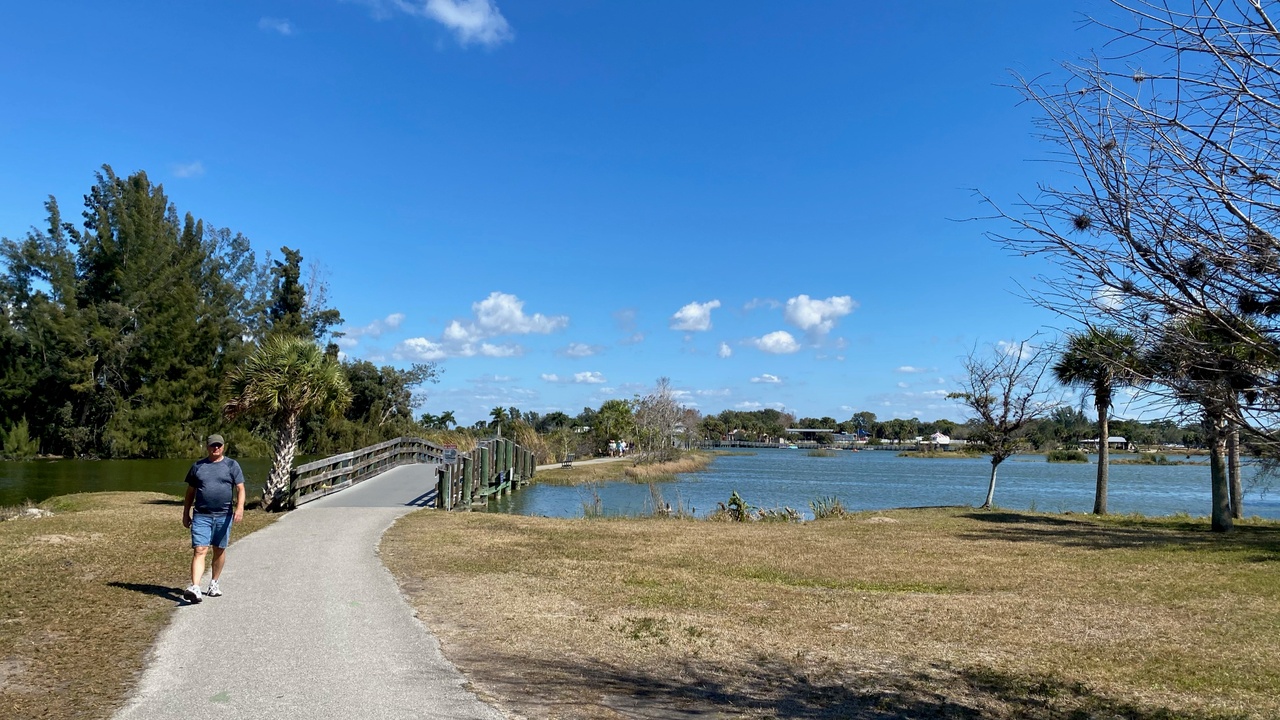2 Types of Stretching to Enhance Performance

A beautiful July summer evening for a 2 mile run in Lakes Park. Photo Courtesy of Charly Caldwell II.
Stretching is traditionally tacked on at the end of an exercise session and only if we have spare time...
However, when we consider all of the benefits stretching provides both before and after exercise, we should really give stretching the due diligence and respect it and our bodies deserve.
I'm sure everyone has experienced the same scenario in one way or another:
After a great workout with a hard effort either in the gym, on the track or in the pool, you've got 5 more minutes set aside for training so you immediately start stretching … not!
Sound familiar?
Most days you're running late and stretches get scrapped from the routine.
Sometimes you get away with it, but this habit of ditching the stretches is risky and will catch up with you.
Every type of exercise we do involves repeated muscle contractions.
These contractions could result in a muscle remaining in a state of high...
5 Reasons to Double-Down on Exercise (Especially If You're Over 40)

A gorgeous start to Summer 2022 - Sunset on the Caloosahatchee River in Fort Myers, Florida - June 21, 2022. Photo Courtesy of Charly Caldwell II.
I reviewed some discouraging statistics in an article from The American College of Sports Medicine.
Did you know that only 1 out of every 10 Americans over 50 exercises enough to gain any cardiovascular benefit?
For the past decade, research has estimated that about half of the physical decline associated with aging may be because of inactivity.
Furthermore, people over 65 in particular require adequate fitness levels to help maintain an independent lifestyle, recover from illness and reduce their risks of injury and disease.
It's also been well documented that it is never too late to get fit.
The human body responds to exercise, no matter what its age, and there are many health benefits.
Conversely, without regular exercise, people over 50 can experience a range of health problems including:
- Decreased muscle mass, strength and ph ...
Pain Free Movement Starts with Good Hip and Spine Stability

Get out and walk, concentrate on your posture, and flow. Take elongated steps, and breath! A beautiful day for a walk in January, in Lakes Park, Fort Myers. Photo Courtesy of Charly Caldwell II
Having adequate mobility and stability is essential for your health and function.
This is especially true when it comes to avoiding injury. When your joint mobility is restricted, your movement is impaired, meaning the risk of injury is increased.
Therefore, you need full mobility when strength training or performing any other form of exercise.
When we are born, we are generally graced with full mobility but as life progresses, our mobility slowly deteriorates due in part to injuries and our lifestyle choices.
A perfect example being sitting for long periods of time.
On the other hand, we are born with no stability. Stability is developed as me mature throughout our childhood and enhanced through exercise and lifestyle choices later in life.
Therefore, placing a large focus on both mobi...
Train Smarter for Peak Performance

Josie, Bill and I filming, as I coach them, for our Video Training Library (learn more about our powerful training library here).
As a coach, I am routinely asked what an athlete can do to improve their performance.
This is usually preceded by a tale of woe about some lack luster race result.
Fortunately for me, a quick skim of their recent racing splits and training logs makes it fairly easy to identify where their problems originate.
If you’re looking for peak performances this season, regardless your sport, you need to be mindful in your efforts and train smarter, not harder.
Error #1, Going out too fast.
This is easy to identify by simply looking at your splits.
Whether you are swimming, biking, running, walking, playing a tennis match or a round of golf, if you have not managed your energy and the second half of your sport is slower than the first half, you went out too fast.
To avoid this, commit to practicing goal specific pacing for at least half your race distance prior...

